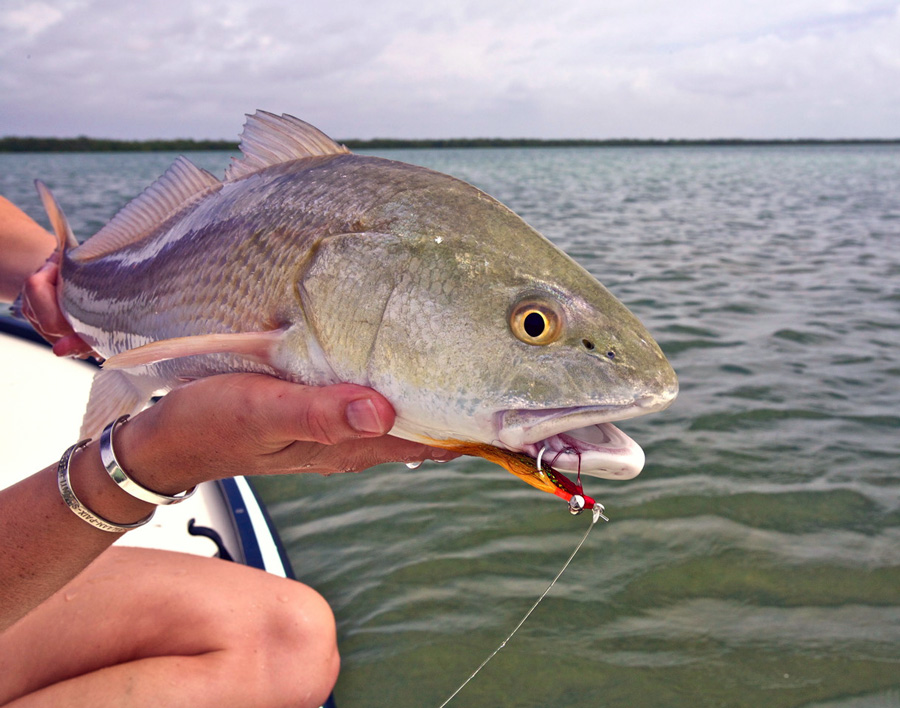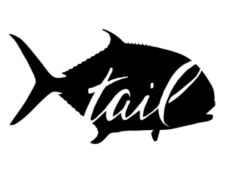The Everglades Seven
by Chico Fernandez
I’ve fly fished in many places around the world, from Tierra del Fuego to Alaska, and I love it all. But when it comes to my favorite place to fly fish, it would be, hands down, the Everglades.
It’s not just about the snook, the redfish, and all the other wonderful fish that live there. It’s also about the wading birds, the beautiful shallow flats with the fluctuating tides, the red mangrove trees along most of the shorelines, the other menagerie of trees, plants, and flowers, and so much more. I love that world. I love brackish water—I feel it runs through my veins.
It’s no coincidence that today I live about 90 minutes from the Everglades—and go as often as I can.
After spending so much time in that world through the years, I have accumulated a large collection of brackish water flies. And I’m often experimenting with some new fly in an effort to learn more. To me that is very exciting.
But as much as I love trying different flies, the truth is that I only use a handful most of the time. And these favorite flies were not chosen just because fish like to eat them; other conditions requiring certain qualities are even more important.
A fly that is lighter and or more aerodynamic, for example, is usually easier to cast, which makes it easier to make accurate casts to tailing fish or long casts when necessary.
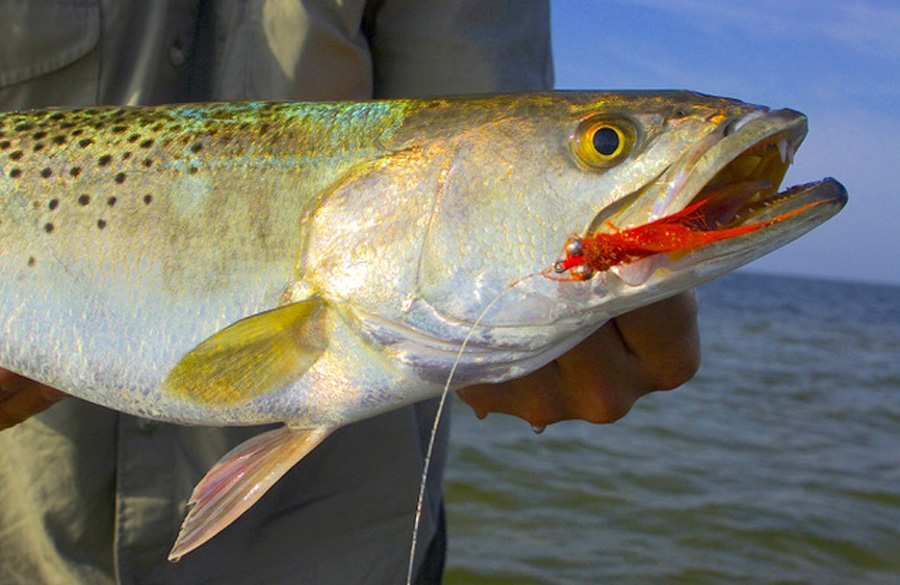
Trout on Chernobyl Crab
Certain areas in the southern part of the Everglades, like Flamingo, often have a lot of floating grass. In those conditions, a fly with a weed guard is of the essence. When fishing a shoreline, a weedless fly also does not get caught as often on branches when we miss. You just slowly retrieve your fly, jumping it from branch to branch, and then softly drop it on the water. It works quite often. So even in areas that do not have as much problem with floating grass, such as Chokoloskee in the north, I still use weed guards. Actually, most of my brackish water flies have weed guards. And if I encounter situations in which I don’t want the weed- guard, I just cut it off.
Muddy waters reduce a fish’s visibility to see prey (or a fly), so it’s important to use a fly that the fish can see or feel. For fish to see it better, a dark color or black fly can make a big difference. To help the fish feel it, a bulky fly that pushes water as it’s retrieved is easier for a fish to sense through its lateral line. A bulky black fly is a great choice in muddy waters. I like to add a bit of flash to these dark flies, preferably in gold, purple, and green, saving silver flash for light-colored fish patterns.
Often when fishing shorelines, you’ll get 99 percent of the strikes within a short distance from the edge. You want to retrieve slowly for the fly to stay in the hot zone as long as possible. The fly I often prefer here is one that breathes and wiggles at the slightest movement from your stripping hand or rod tip. And while there are several materials that will accomplish this very well, my preference usually is marabou.
As a rule, the snook and redfish run bigger in the northern portion of the Everglades than in the southern portion. For southern areas such as Flamingo, my flies run about 3 inches or smaller—unless I’m blind casting in off-color water, when I’ll go with a bigger fly. Up north, my flies run from 3.75 to more than 4 inches.
These scenarios, however, are generalizations; there are always exceptions. But these rules work well for me—not only in the Glades, but also in similar conditions further north in Florida, and anywhere else redfish live.
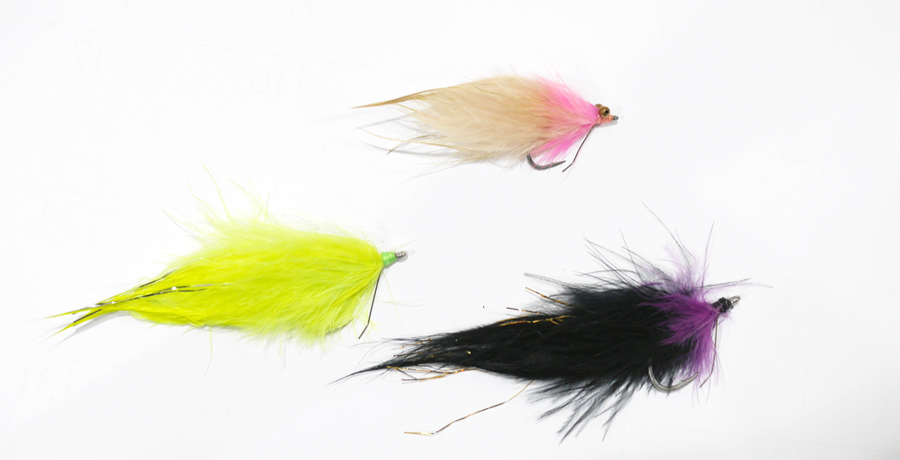 Marabou Madness
Marabou Madness
For a long time, I had an idea for tying an all-marabou Sea-Ducer. Then, while working on my redfish book around 2011, I finally put a No. 1 hook in the vise and started to tie one. After a few weeks of trial and error, I had a fly I liked. The tail was a whole marabou feather, stem and all, with a bit of flash. The head was marabou feathers wrapped around the shank.
In the water, the fly breathes—even standing still. Indeed, I’ve taken many fish that ate the fly when I wasn’t moving it. When stripping it straight, with no action, it’s alive as it moves. And when working a shoreline, I can keep the fly breathing, wiggling, acting alive, while moving it very slowly, thus staying in the zone close to the mangrove roots longer than with many other flies.
For a while, I only fished it in all black, and caught all the gamefish in the Glades. I loved it. Then I went to other colors, like white with a red head, all chartreuse, and more. The black pattern now has a purple hackle. Another great color combo has been all tan with a pink hackle. Last year, fishing with Captain Steve Huff, I sight casted and landed a 20-pound snook with that color. I had tears in my eyes when I held him for Steve to take a photo. I was that excited.
Today, my friend Chris Dean ties them for me—from small ones just over 2.5 inches on a No. 2 hook to more than 4 inches on 1/0 hook. He ties them in a variety of colors, mostly with a bead chain, but sometimes with lead eyes. The small sizes are also great for baby tarpon. The Marabou Madness is my favorite fly for the Everglades.
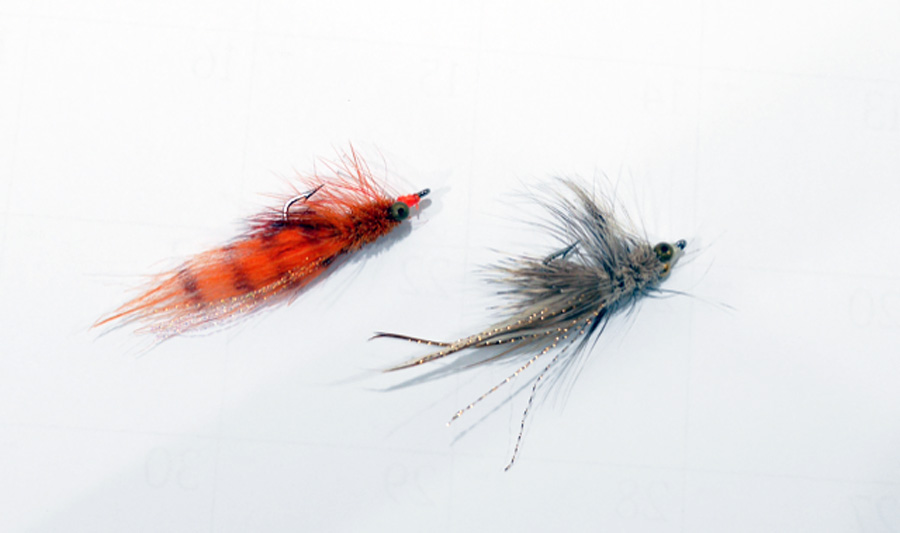 Borski’s Chernobyl Crab
Borski’s Chernobyl Crab
For many years I have been using Borski’s Chernobyl Crab to fish the Glades. The deer belly hair on the head does two things that I love: It lands quite softly on the water—in spite of the fact that I use large bead chain on this pattern—and the deer hair pushes water that the fish can feel as you retrieve the fly. It was designed to ride inverted, with the point of the hook up. And using mono for a weed guard is perfect for an inverted fly. For me, the fly imitates a shrimp hopping. I don’t know what redfish think it is, but they love it. I use the fly in all tan or all orange, which is my favorite. If you want to fish the fly deeper, it works great with lead eyes. There are always a few Chernobyl flies in one of my Everglades fly boxes.
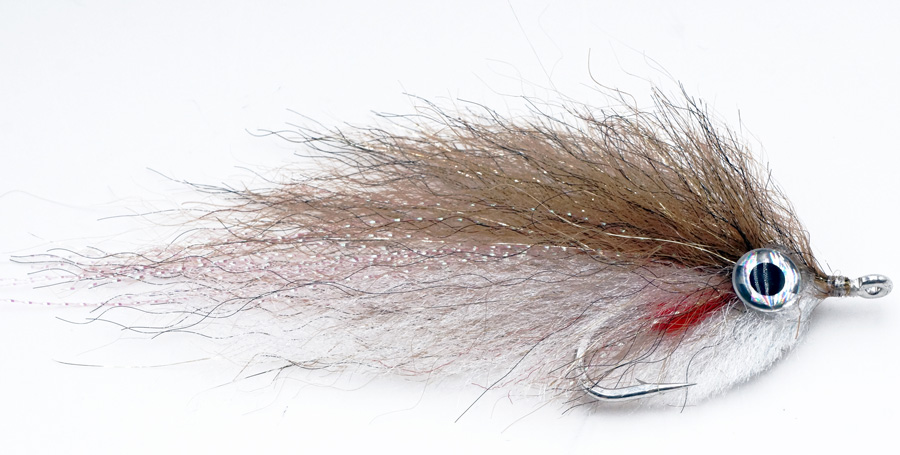 Puglisi baitfish patterns
Puglisi baitfish patterns
I’ve used these patterns to catch fish in fresh water, brackish water, and blue water—from black bass to snook to blackfin tuna. As you retrieve it, the combination of a great translucent silhouette and the large eyes makes it look very realistic. In the Everglades I use the white body with a green or brown back when the water is very clear, and the purple and black pattern in muddy or low-visibility water. The sizes I use most are from 2.5 inches to 4 inches. In areas where the water is very clear and the snook and baby tarpon are spooky, I generally pull out a small Puglisi baitfish pattern in white with a green or tan back, and use a 12-foot leader and a 6-weight clear floating fly line. This combo is deadly in those conditions.
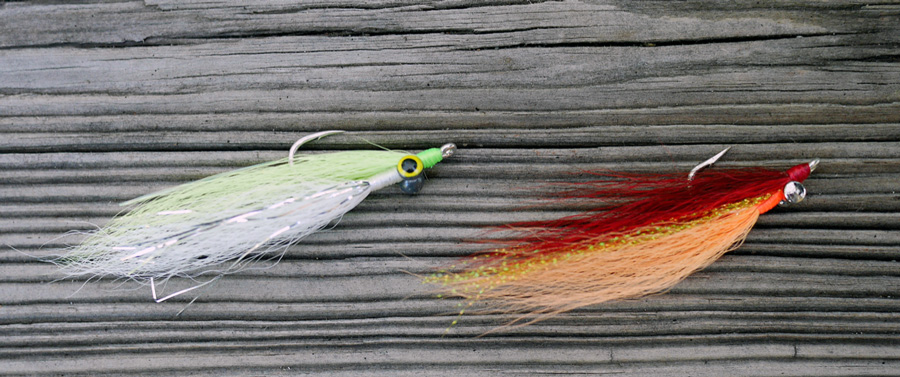 Clouser Minnow
Clouser Minnow
Designed by Bob Clouser, this fly can do almost anything, but I generally use the fly when I want it to go down. It is great with big bead-chain eyes. And if I need to go deeper, I use lead eyes. I also use this fly when fishing a sinking line. The classic pattern was tied with bucktail in white and chartreuse, and I like it just fine that way. It’s an excellent imitation of a minnow and many other juvenile fish. In the Everglades I use a Clouser to fish deep shorelines, potholes, and the mouths of creeks and rivers— often with a sinking fly line. Bouncing the heavy Clouser on the sandy bottom of beaches can be deadly.
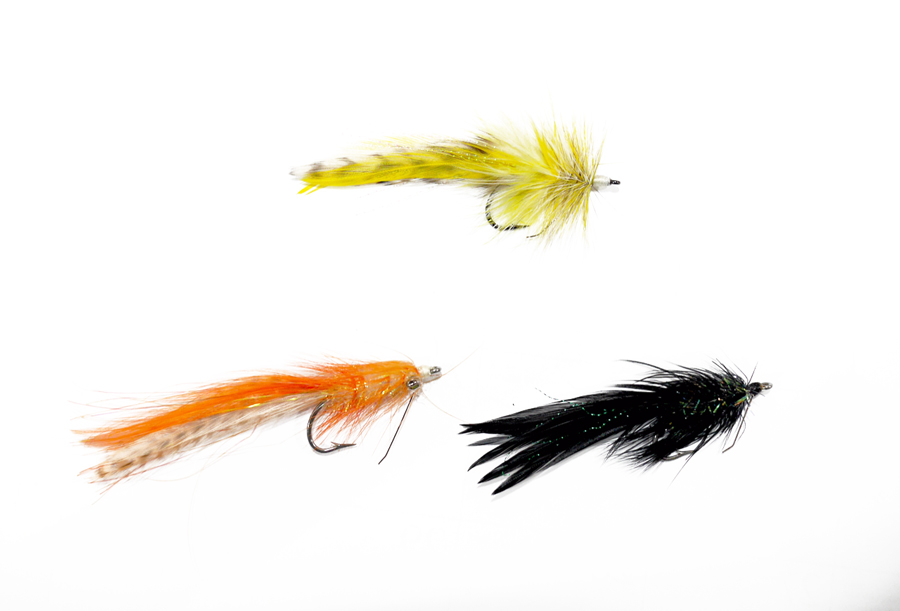 The Sea-Ducer (and his cousin the Crystal Shrimp)
The Sea-Ducer (and his cousin the Crystal Shrimp)
The hackle body and tail of a Sea-Ducer are constantly moving and breathing, whether you retrieve it or let it sit still for a second or two. The bulk of the hackle pushes water when retrieved, helping attract predators when they feel its presence. The fly is always seducing, always working for you. I’ve caught big snook in the Glades and big dolphin in the ocean with it.
Around 1995 or so, my son Stephen, who tied lots of my flies until he went to college, came up with a variation of the Sea-Ducer that I ended up calling the Crystal Shrimp. He wrapped heavy cactus chenille on the shank of the hook before wrapping the feathers. The result was a fly that has a bulkier body to push water and more flash on the head. It also sinks a bit faster. The fly has produced lots of fish when you need the fly to sink more in the flats but you don’t want it to sink head first.
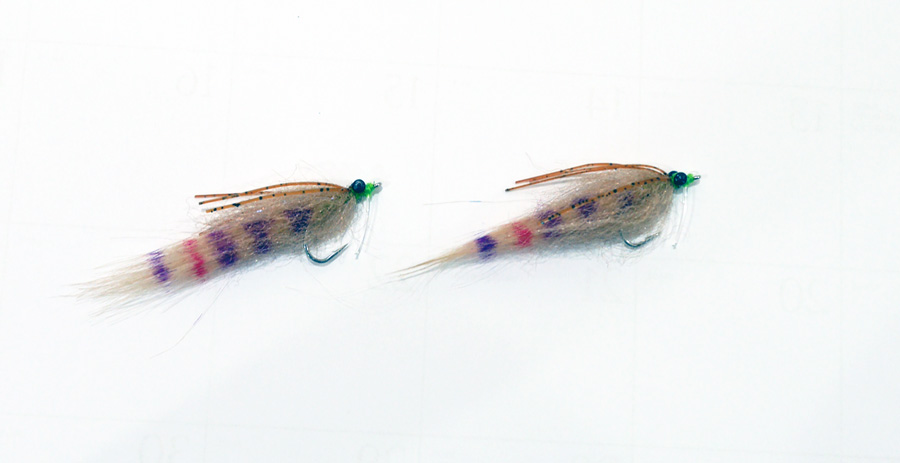
Dave Denkert Shrimp
Dave’s Little Tan Shrimp
Every time I go fishing with Captain Dave Denkert, this little tan fly is on at least one of his fly rods. Dave says he and his clients have caught every gamefish in the Glades with it, and it’s mostly what he uses. I’ve caught many fish myself. You watch it moving through the water, and it’s a very good imitation of a small shrimp.
The fly is small, with a No. 4 hook, all tan with painted bars and a little bead chain. It weighs nothing, and it’s very aerodynamic, so it’s easy to cast, even with your lightest rods. It’s perfect for tailing fish in shallow water. And yes, it’s very simple, but sometimes those are the best flies.
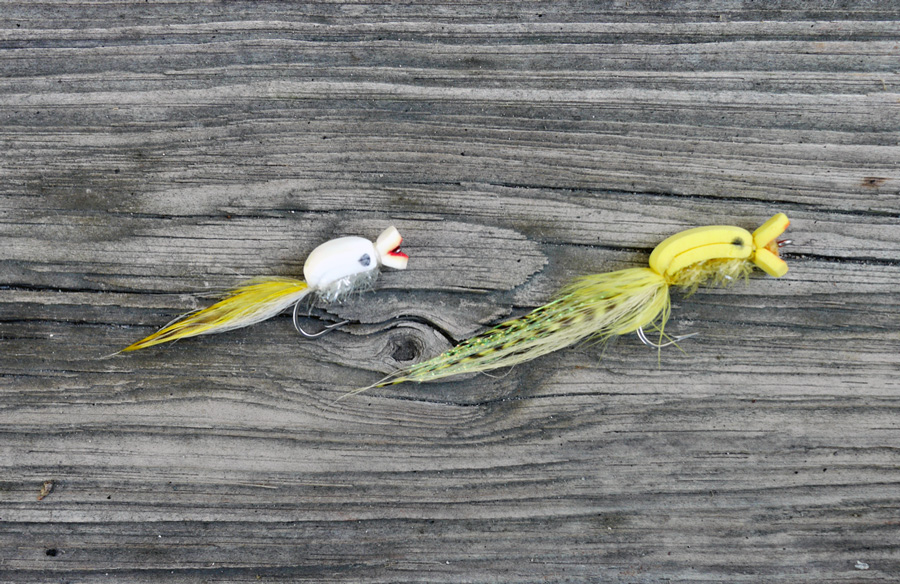
Hot Lips Snook Fly
Hot Lips
Nothing is more exciting to a fly fisher than the surface strike on a loud popper. But when fishing the flats, and especially in clear water, a popper would scare fish right and left. It’s too loud. And even if you retrieve it slowly, it still scares fish. It doesn’t belong there. But don’t despair; there is a great fly for those conditions.
The Hot Lips, created by Captain Steve Huff, is such a fly. Made with feathers and bucktail for a tail, and a foam body, this fly lands softly on the water, so it doesn’t spook fish as heavier surface flies often do. And it’s not hard to cast.
When retrieved, the little mouth up front makes just the right amount of noise. It’s like a shrimp on the surface. When a fish takes it, the soft foam feels more realistic than most flies. It’s chewable. I find fish keep it in their mouths much longer than a popper, so you have a better chance of hooking up. The Hot Lips is also quite durable. I’ve caught many snook, baby tarpon, and redfish with the same fly. And after a good rinse with fresh water, the fly is still in my fly box waiting to fish again.
Just remember to use monofilament leader and especially mono bite tippets with this pattern. Fluorocarbon, with a much higher density than mono, will pull the surface fly down and ruin the action.
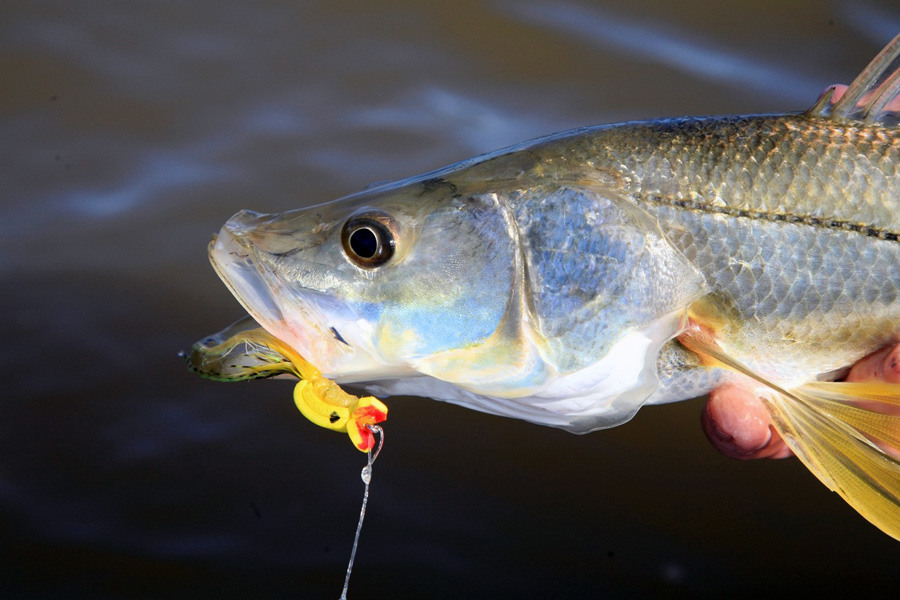
Snook on Hot Lips fly

